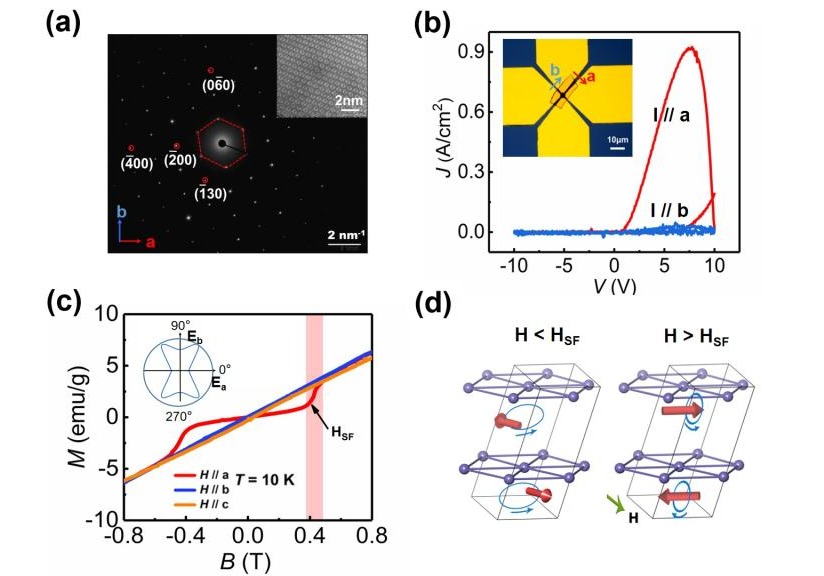Associate Professor Xiaolei Wang from the Faculty of Science, Beijing University of Technology, has made important progress in the research of magnetoelectric storage devices. The relevant paper, entitled "Electrical and magnetic anisotropies in van der Waals multiferroic CuCrP2S6", has been published in Nature Communications 14, 840 (2023).
As the core carrier of information storage, non-volatile devices can utilize the physical properties of storage materials as the storage "medium". Since there is no need for continuous power to maintain stored data, the energy consumption is much lower than that of traditional semiconductor-based storage devices. How to easily and efficiently manipulate the physical properties of storage materials in order to achieve multi-stable switches of the variables of storage devices, which is data writing, has become one of the key scientific and technical issues that needs to be solved in the development of non-volatile storage devices.
This work features the following innovations: 1) For the first time, the in-plane electrical anisotropies in van der Waals (vdW) multiferroic CuCrP2S6 are revealed, as well as the memristive behaviors modulated by poling voltage, poling time, and polarized directions. 2) The observation of spin-flop and antiferromagnetic transition are regulated by temperature and magnetic fields, and the parameters of magnetic anisotropy are determined in different crystal axes. 3) The anisotropic spin resonance behaviors and multiple resonance modes modulated by a small field (HSF = 0.4 T) are discovered in the conventional frequency range (3-13 GHz). 4) The magnetoelectric coupling effect is demonstrated, which can be used to make new low-power, non-volatile magnetoelectric multi-terminal memristors. Compared with the current-driven spintronic memristor, the energy consumption can be reduced by two orders of magnitude.

Fig. (a) High-resolution TEM image of the multiferroic CuCrP2S6 material; (b) Current rectification behaviors along different crystal axes, indicating electricalanisotropies in the CuCrP2S6 memristor; (c) The magnetic anisotropy and spin regulation of the CuCrP2S6 material; (d) Schematic representation of different magnon modes of the CuCrP2S6 material below and above the threshold small field,HSF.
This is another important research achievement of Xiaolei Wang's team from the Department of Condensed Matter Physics, Faculty of Science, in the areas of memristor, spin storage and magnetoelectric manipulation following their previous work on new neuron devices (Nature Communications 13, 574 (2022)).





